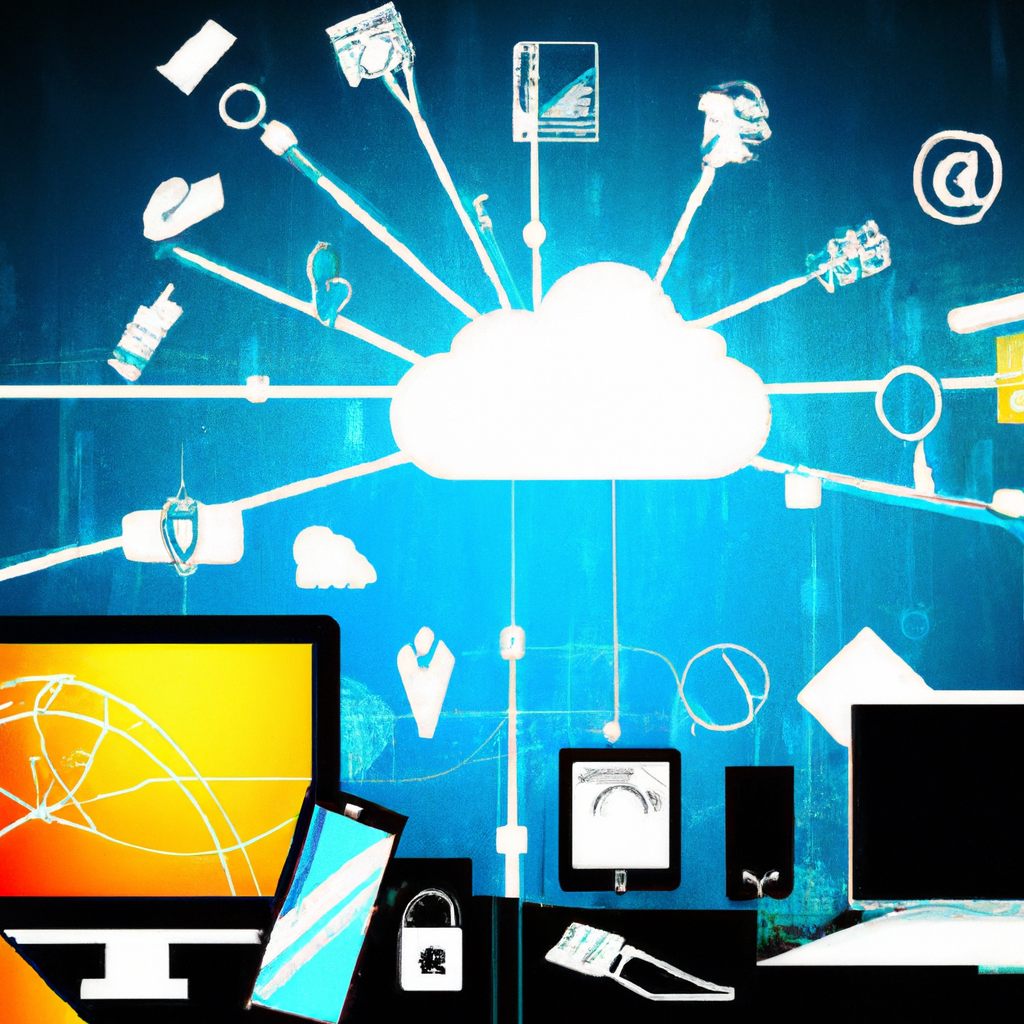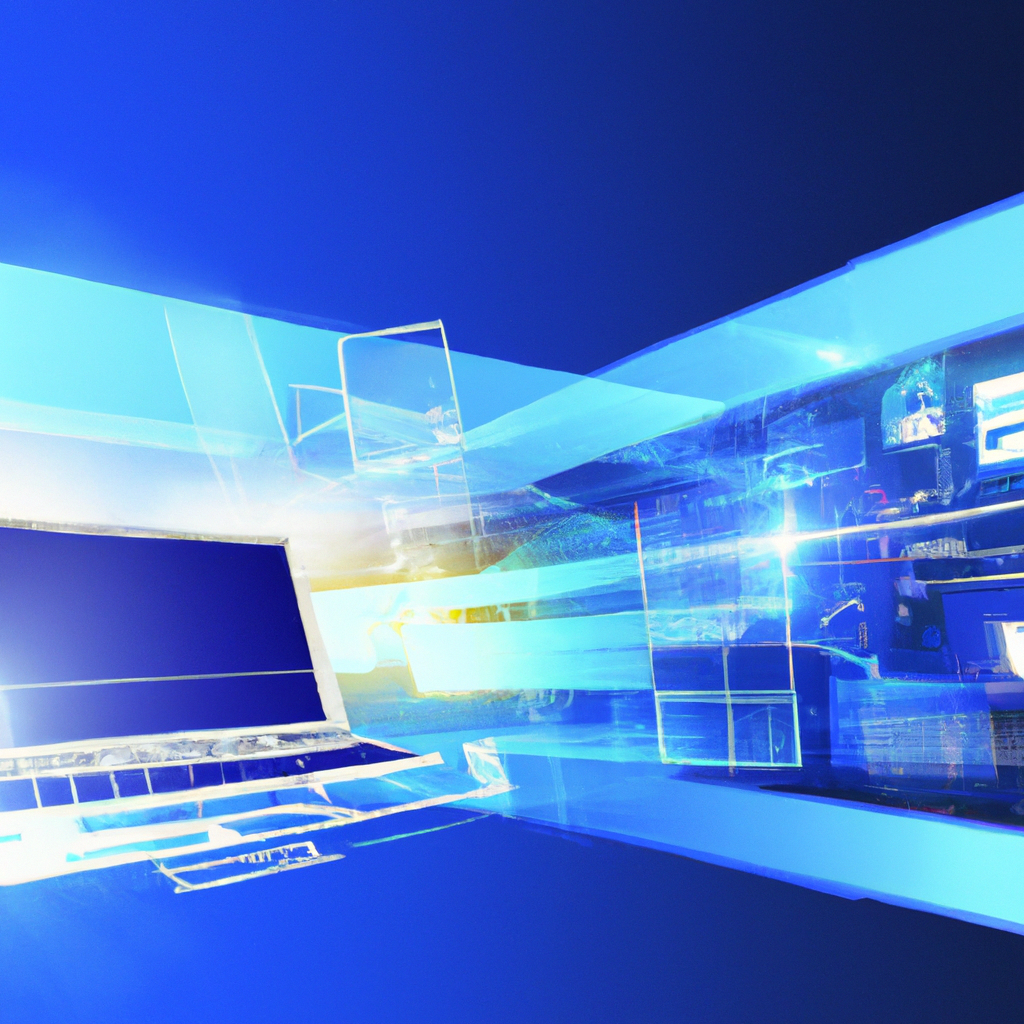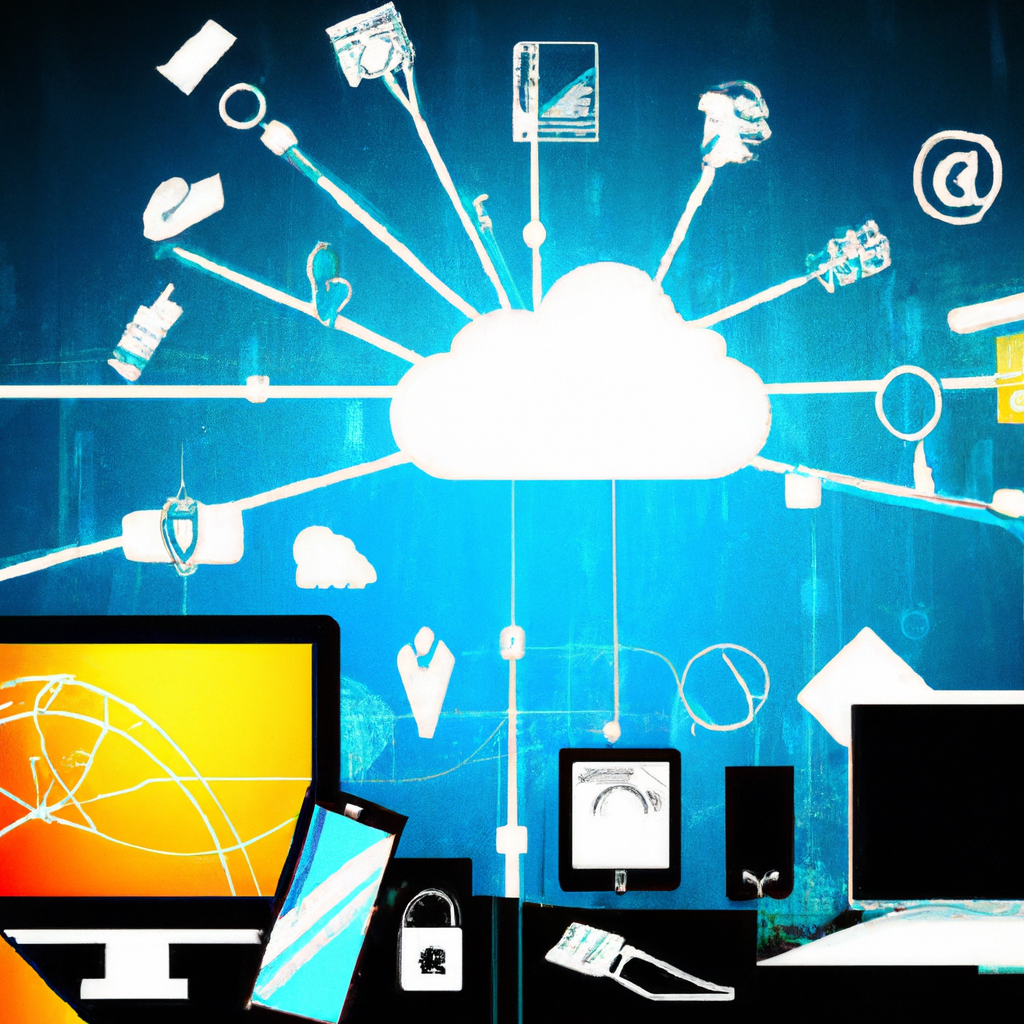In today’s digitally-driven world, Software as a Service (SaaS) has become a ubiquitous part of our daily lives, revolutionizing the way we access and use software applications. One compelling example of SaaS in real daily life usage is streaming platforms like Netflix. By subscribing to Netflix, you gain access to a vast library of movies and TV shows that can be accessed anytime and anywhere, without the need to download or install any software. This seamless and convenient experience is made possible by SaaS, showcasing just how integral it has become in our day-to-day activities. SaaS, or Software as a Service, has become an integral part of our daily lives, offering numerous benefits and convenience. In this article, we will explore the various advantages of using SaaS applications and highlight popular examples in different domains, such as business, education, communication, healthcare, travel and hospitality, entertainment and media, and personal productivity.

This image is property of pixabay.com.
Benefits of Using SaaS
Cost-Effective Solution
One of the main benefits of utilizing SaaS is the cost-effectiveness it brings. Traditional software often requires significant upfront investment and ongoing maintenance costs. With SaaS, you typically pay a subscription fee, which includes software updates, maintenance, and customer support. This eliminates the need for expensive infrastructure, IT staff, and software licenses. By using SaaS, businesses and individuals can access the latest software applications without the burden of hefty upfront costs, making it an affordable solution for all.
Ease of Use
SaaS applications are designed with user-friendliness in mind. They offer intuitive interfaces, making it easy for individuals, regardless of their technical expertise, to navigate and utilize the software efficiently. Whether you are a business professional or a student, the simplicity and ease of use of SaaS applications enable you to quickly adapt and make the most of the software, without the need for extensive training or technical knowledge.
Scalability and Flexibility
Another advantage of SaaS is its scalability and flexibility. Traditional software often requires additional servers, storage, and infrastructure upgrades as your needs grow. With SaaS, you can easily scale up or down based on your requirements. If your business expands, you can seamlessly increase the number of users and access additional features without the hassle of installing new software. Conversely, if you need to downsize, you can reduce the number of users or features accordingly. This flexibility allows you to adapt and align your software usage with your business needs, providing a hassle-free experience.
Popular Examples of SaaS in Daily Life
Email Services
Email services such as Gmail and Outlook are prime examples of SaaS in our daily lives. These platforms provide a cloud-based solution for managing and sending emails, eliminating the need for hosting and managing email servers. With user-friendly interfaces, powerful search capabilities, and seamless integration with other applications, email services have become an indispensable tool for personal and professional communication.
Social Media Platforms
Social media platforms like Facebook, Twitter, and Instagram rely on SaaS to offer their users a seamless experience. From posting updates and sharing photos to interacting with friends and colleagues, social media platforms utilize SaaS infrastructure to handle immense amounts of user-generated data. The scalability and flexibility of SaaS enable these platforms to accommodate the ever-growing number of users and deliver a smooth, uninterrupted user experience.
Video Streaming Services
Streaming services such as Netflix, Hulu, and Spotify have revolutionized the way we consume media. By utilizing SaaS, these platforms enable users to stream movies, TV shows, and music directly to their devices, without the need to download or store large files locally. With SaaS, these services can provide a vast library of content, personalized recommendations, and seamless playback across multiple devices. The convenience and variety offered by video streaming services make them a popular choice for entertainment in our daily lives.
SaaS Applications in Business
Customer Relationship Management (CRM) Software
CRM software, like Salesforce and HubSpot, empowers businesses to manage and analyze customer interactions and data efficiently. By utilizing SaaS, these tools provide businesses with a centralized platform to track sales leads, manage customer contacts, oversee marketing campaigns, and improve customer service. The cloud-based nature of CRM SaaS allows real-time collaboration, easy data access, and automatic software updates, enhancing productivity and streamlining business operations.
Project Management Tools
Project management tools, such as Asana and Trello, offer businesses a comprehensive solution for organizing and tracking projects, tasks, and deadlines. SaaS-based project management tools provide businesses with a centralized platform for teams to collaborate and communicate, assigning tasks, monitoring progress, and sharing documents. With real-time updates and notifications, project management tools help teams stay organized, increase productivity, and ensure timely project completion.
Accounting and Finance Software
Cloud-based accounting and finance software, like QuickBooks and Xero, have simplified financial management for businesses of all sizes. By using SaaS, businesses can easily track income and expenses, generate invoices, manage payroll, and reconcile bank statements. SaaS accounting software allows for real-time data access, automatic backups, and secure data storage, eliminating the need for manual data entry and the risk of data loss. These advancements streamline financial tasks, enhance accuracy, and provide businesses with valuable insights for informed decision-making.
SaaS in Education
Learning Management Systems (LMS)
Learning Management Systems, such as Moodle and Canvas, have transformed the way education is delivered. By utilizing SaaS, educators can create and manage online courses, distribute learning materials, track student progress, and facilitate communication and collaboration. SaaS-based LMS platforms provide students with flexible access to course materials, interactive assessments, and virtual classrooms, enabling remote and personalized learning experiences.
Collaboration Tools
SaaS collaboration tools, like Google Workspace and Microsoft 365, have revolutionized the way students and educators collaborate and communicate. These platforms offer cloud-based document sharing, real-time editing, and instant messaging, allowing for seamless teamwork on group projects, research papers, and presentations. The collaborative nature of SaaS tools fosters creativity, enhances productivity, and promotes effective collaboration in the education sector.
Virtual Classroom Software
Virtual classroom software, such as Zoom and Microsoft Teams, have become indispensable tools for remote learning and online education. By utilizing SaaS, these platforms provide educators with the ability to conduct live interactive classes, share presentations, and engage students through video, audio, and chat features. With SaaS-based virtual classroom software, students can participate in real-time discussions, ask questions, and access recorded lectures, ensuring a dynamic and engaging learning experience, regardless of their location.

This image is property of pixabay.com.
SaaS for Communication and Collaboration
Email and Calendar Apps
SaaS email and calendar apps, like Google Workspace and Microsoft Outlook, offer individuals and businesses efficient communication and scheduling solutions. These platforms allow users to send and receive emails, manage multiple email accounts, and schedule appointments and events. SaaS-based email and calendar apps offer synchronization across devices, real-time notifications, and seamless integration with other productivity tools, enabling effective communication and organized time management.
Cloud Storage and File Sharing Services
Cloud storage and file sharing services, such as Dropbox and OneDrive, have transformed the way we store and access files. These SaaS solutions allow users to store files securely in the cloud, synchronize files across devices, and easily share files with others. With SaaS-based cloud storage, individuals and businesses can access their files anytime, anywhere, collaborate on documents in real-time, and ensure data backup and recovery, providing a flexible and efficient storage solution.
Online Meeting and Video Conferencing Tools
SaaS online meeting and video conferencing tools, such as Zoom and Google Meet, have become essential for businesses and individuals alike. With the rise of remote work and virtual communication, these platforms enable teams to collaborate seamlessly, conduct online meetings, and engage in face-to-face conversations regardless of geographical location. SaaS-based online meeting tools offer features like screen sharing, chat functionality, and recording options, fostering effective communication and collaboration even in a distributed work environment.
SaaS in Healthcare
Electronic Health Record (EHR) Systems
Electronic Health Record systems, such as Epic and Cerner, have transformed healthcare by digitizing patient records and streamlining healthcare operations. With SaaS-based EHR systems, healthcare providers can securely access patient information, track medical history, and share data across different healthcare facilities. SaaS EHR systems offer real-time updates, advanced data analytics, and enhanced privacy and security measures, improving patient care, and operational efficiency.
Telemedicine Platforms
Telemedicine platforms, like Amwell and Teladoc, leverage SaaS to provide remote medical consultations and healthcare services. With SaaS-based telemedicine platforms, patients can schedule virtual appointments, consult with healthcare professionals through video calls, and receive medical advice and prescriptions. SaaS telemedicine platforms offer secure communication, efficient appointment management, and accessibility, enabling individuals to access healthcare services conveniently and remotely.
Medical Billing and Practice Management Software
SaaS medical billing and practice management software, such as Kareo and Athenahealth, simplify administrative tasks for healthcare practices. By utilizing SaaS, these tools automate the billing process, streamline appointment scheduling, and manage patient records. SaaS medical billing software provides accurate coding, electronic claim submission, and real-time revenue tracking, improving billing efficiency and reducing administrative burdens for healthcare providers.

This image is property of pixabay.com.
SaaS for Travel and Hospitality
Online Booking Platforms
Online booking platforms, such as Expedia and Booking.com, rely on SaaS to provide users with a seamless and convenient booking experience. By utilizing SaaS, these platforms offer a wide array of travel options, from flights and hotels to car rentals and vacation packages. SaaS online booking platforms provide users with real-time availability, instant confirmation, and secure transactions, simplifying the travel planning process and making it accessible to millions of users worldwide.
Property Management Systems (PMS)
Property Management Systems, like Airbnb and Vrbo, utilize SaaS to aid hosts in managing their properties and guest bookings. SaaS-based PMS platforms offer features such as listing management, calendar synchronization, and payment processing. With the scalability and flexibility of SaaS, hosts can efficiently manage listings, communicate with guests, and handle reservations, ensuring a smooth and hassle-free experience for both hosts and travelers.
Point of Sale (POS) Systems
Point of Sale systems, such as Square and Shopify, rely on SaaS to streamline transactions and inventory management for businesses in the travel and hospitality industry. By utilizing SaaS, these platforms provide businesses with user-friendly POS solutions, facilitate secure payment processing, and offer advanced inventory tracking and analytics. SaaS-based POS systems help businesses manage sales, inventory, and customer data, enhancing operational efficiency and delivering a seamless customer experience.
SaaS in Entertainment and Media
Music and Podcast Streaming Services
Music and podcast streaming services, like Spotify and Apple Music, rely on SaaS to provide users with instant access to a vast library of music and podcasts. SaaS-based streaming services use complex algorithms to deliver personalized recommendations, create curated playlists, and offer offline listening options. With the convenience and variety offered by SaaS streaming services, individuals can enjoy their favorite music and podcasts anytime, anywhere, and explore new content based on their preferences.
Video Editing and Production Software
Video editing and production software, such as Adobe Premiere Pro and Final Cut Pro, leverage SaaS to offer powerful tools and capabilities to professionals and content creators. By utilizing SaaS, these platforms provide cloud-based editing, collaboration, and storage solutions, enabling real-time project sharing, remote workflow collaboration, and seamless integration with other creative applications. SaaS video editing software empowers users to create professional-quality videos, edit footage efficiently, and unleash their creativity without the constraints of local hardware limitations.
Graphic Design Tools
Graphic design tools, such as Canva and Adobe Creative Cloud, rely on SaaS to provide individuals and businesses with intuitive and powerful design capabilities. SaaS-based graphic design software offers a wide range of templates, fonts, and design elements, enabling users to create professional graphics, logos, and marketing materials. With SaaS graphic design tools, individuals and businesses can unleash their creativity, produce visually appealing designs, and enhance their brand identity without the need for extensive design knowledge or expensive software licenses.

SaaS for Personal Productivity
Note-Taking and Organizational Apps
Note-taking and organizational apps, such as Evernote and Microsoft OneNote, leverage SaaS to help individuals stay organized and productive. These apps provide a digital platform for users to create, store, and access notes, to-do lists, and other important information. SaaS note-taking apps offer synchronization across devices, searchable notes, and collaboration features, facilitating efficient information management, task tracking, and productivity enhancement.
Task and Project Management Tools
Task and project management tools, such as Todoist and Basecamp, utilize SaaS to enable individuals and teams to stay organized and track progress on various tasks and projects. SaaS-based task management tools offer features like task assignment, deadline reminders, and progress tracking, ensuring clear visibility and effective collaboration. By utilizing these tools, individuals can prioritize tasks, manage deadlines, and ensure efficient project completion, both in personal and professional settings.
Personal Finance Software
Personal finance software, such as Mint and Quicken, relies on SaaS to provide individuals with tools for budgeting, expense tracking, and financial planning. SaaS-based personal finance software allows users to link their bank accounts, categorize transactions, and generate customized reports to gain insights into their financial health. With the convenience and automation offered by SaaS personal finance software, individuals can effectively manage their finances, set financial goals, and make informed decisions for their financial well-being.
Conclusion
In conclusion, SaaS has penetrated various aspects of our daily lives, providing numerous benefits and convenience. From cost-effectiveness and ease of use to scalability and flexibility, SaaS applications offer businesses and individuals a viable solution for their software needs. Whether it’s in business, education, communication and collaboration, healthcare, travel and hospitality, entertainment and media, or personal productivity, SaaS has revolutionized the way we operate and interact in various domains. With its continuous advancements and widespread adoption, SaaS is set to play an even more significant role in shaping our future and enhancing our daily lives.

